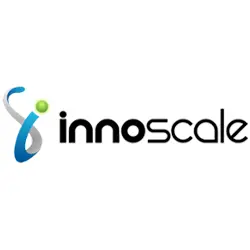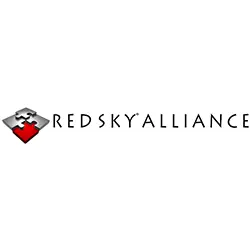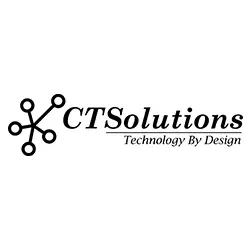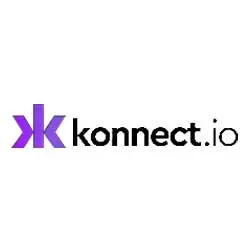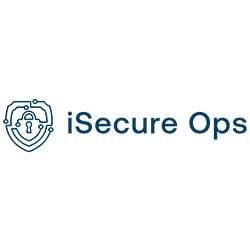In an era where digital security is paramount, understanding past breaches is crucial for preventing future ones. This article explores ten of the most significant hacks in history and how TRaViS, a cutting-edge External Attack Surface Management tool, could have mitigated these devastating attacks.
Yahoo: The Billion-User Breach (2013-2014)

The Hack
In 2013 and 2014, Yahoo faced two of the largest data breaches in history. The first breach, occurring in August 2013, affected all 3 billion user accounts, while the second breach in late 2014 impacted 500 million accounts. The attackers exploited an SQL injection vulnerability to gain initial access to Yahoo's systems, compromising sensitive information such as email addresses, passwords, and security questions.
The Impact
The breaches led to widespread phishing attacks and identity theft, as the stolen data included unencrypted security questions and answers, which could be used to access email accounts and other personal information. The impact on Yahoo was significant, with the company's acquisition value being reduced by $350 million due to the breaches.
How TRaViS Could Have Helped
TRaViS, an advanced attack surface management platform, could have significantly mitigated the impact of these breaches. Here are some ways TRaViS could have helped:
- Continuous Monitoring: TRaViS's continuous monitoring capabilities could have identified vulnerabilities like SQL injection in real-time, allowing for swift remediation before exploitation.
- Detection of Exposed Information: TRaViS's advanced threat intelligence could have detected exposed sensitive information before it was exploited by malicious actors, providing early warnings to Yahoo's security team.
- Early Warnings: TRaViS's real-time threat intelligence and dark web monitoring could have provided early warnings of potential threats, enabling Yahoo to take proactive measures to prevent the breaches.
- Enhanced Security Measures: TRaViS's comprehensive attack surface management could have helped Yahoo implement robust security measures, including encryption of sensitive data and multi-factor authentication, to prevent unauthorized access.
By leveraging TRaViS's advanced capabilities, Yahoo could have potentially prevented or significantly minimized the impact of these breaches, protecting the sensitive information of billions of users.
Equifax: The Credit Bureau Catastrophe (2017)

The Hack
In 2017, Equifax, one of the largest credit reporting agencies in the world, suffered a catastrophic data breach that exposed the personal information of 147 million individuals. The breach was facilitated by an unpatched vulnerability in Apache Struts, a widely used open-source framework for building web applications.
The attackers exploited this vulnerability to gain unauthorized access to Equifax's systems, extracting sensitive data including names, Social Security numbers, birth dates, addresses, and in some cases, driver's license numbers. The breach also affected 15.2 million British residents and 19,000 Canadian citizens.
The Impact
The Equifax breach had a profound impact on the affected individuals and the company itself. The massive potential for identity theft and fraud led to widespread concern and erosion of public trust in Equifax as a major credit reporting agency. The breach also resulted in significant financial losses for Equifax, with the company agreeing to pay at least $575 million, and potentially up to $700 million, as part of a global settlement with the Federal Trade Commission (FTC) and other regulatory bodies.
How TRaViS Could Have Helped
TRaViS's comprehensive security management could have significantly mitigated the impact of the Equifax breach. Here are some ways TRaViS could have helped:
- Automatic Detection: TRaViS would have automatically detected the Apache Struts vulnerability, alerting Equifax to apply critical security patches promptly. This proactive approach could have prevented the breach altogether.
- Prompt Patching: TRaViS would have ensured that all necessary patches were applied in a timely manner, reducing the window of vulnerability and minimizing the risk of exploitation.
- Inventory Management: TRaViS would have maintained an up-to-date inventory of digital assets, ensuring no system was left exposed. This comprehensive visibility would have helped Equifax identify and address vulnerabilities before they could be exploited.
By leveraging TRaViS's advanced security management capabilities, Equifax could have potentially avoided the devastating consequences of the breach, protecting the sensitive information of millions of individuals and maintaining public trust in the company.
Marriott International: The Hospitality Nightmare (2018)

The Hack
In 2018, Marriott International, one of the world's largest hotel chains, faced a monumental data breach that affected approximately 500 million guests. The breach originated from vulnerabilities in the Starwood reservation system, which Marriott had acquired in 2016. The attackers exploited these vulnerabilities to gain unauthorized access to Marriott's systems, extracting sensitive guest data including names, email addresses, phone numbers, passport numbers, and in some cases, credit card information.
The breach was particularly concerning due to the extensive nature of the data exposed. Passport numbers, in particular, are highly sensitive and can be used for identity theft and other malicious activities. The breach also highlighted the challenges of integrating acquired systems and the importance of thorough security assessments during mergers and acquisitions.
The Impact
The Marriott breach had far-reaching consequences for the company and its guests. The exposure of sensitive guest data led to widespread concern and criticism, damaging Marriott's reputation and eroding trust among its customers. The breach also resulted in significant regulatory fines, including a £18.4 million penalty under the General Data Protection Regulation (GDPR) in the UK. This fine was one of the largest GDPR penalties at the time, underscoring the severity of the breach and the importance of robust data protection measures.
In addition to the financial penalties, Marriott faced numerous lawsuits and regulatory investigations, further exacerbating the financial and reputational damage. The breach served as a stark reminder of the critical importance of cybersecurity in the hospitality industry, where sensitive guest data is often at risk.
How TRaViS Could Have Helped
TRaViS's advanced security management capabilities could have significantly mitigated the impact of the Marriott breach. Here are some ways TRaViS could have helped:
- Comprehensive Integration: TRaViS would have ensured a thorough security assessment during the integration of the Starwood reservation system, identifying and addressing vulnerabilities before they could be exploited.
- Continuous Monitoring: TRaViS's continuous monitoring capabilities would have detected any suspicious activity or unauthorized access attempts, providing early warnings and enabling swift remediation.
- Data Encryption: TRaViS would have ensured that sensitive guest data, including passport numbers, was properly encrypted and protected, minimizing the risk of exposure in the event of a breach.
By leveraging TRaViS's advanced security management capabilities, Marriott could have potentially avoided the devastating consequences of the breach, protecting the sensitive information of millions of guests and maintaining trust in the company.
Target: The Point-of-Sale Disaster (2013)
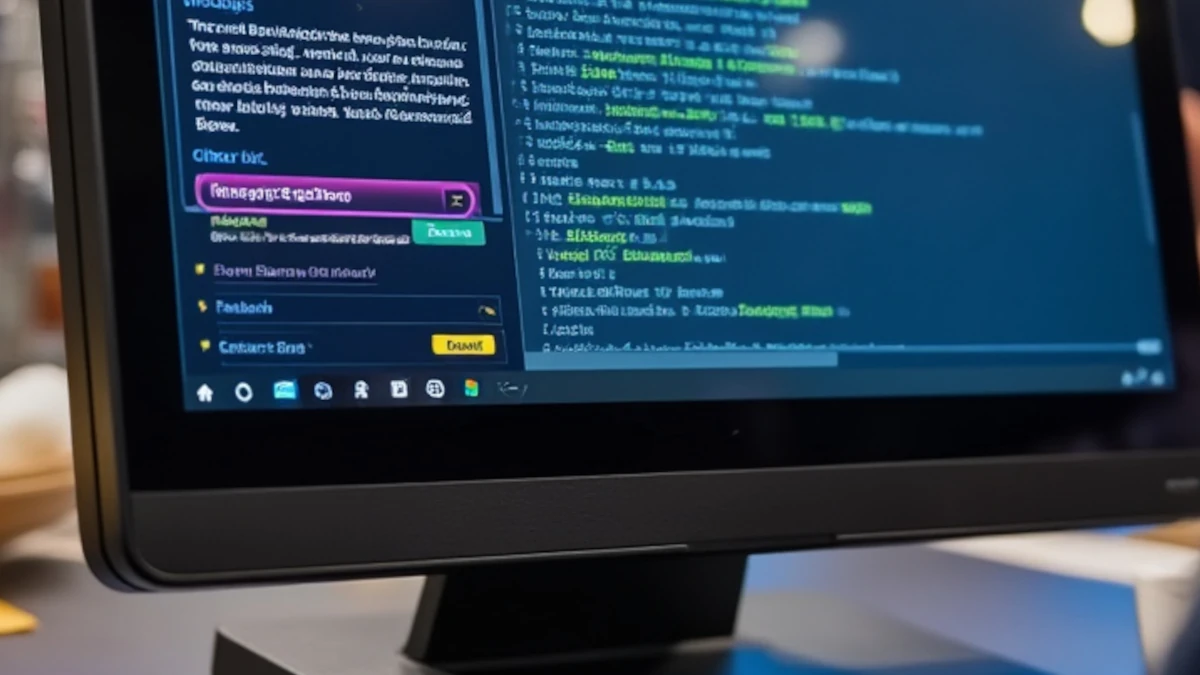
The Hack
In 2013, Target, one of the largest retailers in the United States, suffered a massive data breach that compromised 40 million credit and debit card accounts. The attackers gained access to Target's systems through a third-party vendor's credentials, which had been stolen in a phishing attack. The attackers used these credentials to install malware on Target's point-of-sale (POS) terminals, allowing them to capture sensitive payment information, including card numbers, expiration dates, and security codes.
The breach was particularly concerning due to the widespread nature of the compromise. The attackers had access to Target's systems for several weeks, during which time they were able to extract sensitive payment information from millions of customers. The breach was discovered in December 2013, but it is believed that the attackers had access to Target's systems as early as November of that year.
The Impact
The Target breach had a devastating impact on the company and its customers. The massive compromise of customer financial information led to widespread concern and criticism, damaging Target's reputation and eroding trust among its customers. The breach also resulted in significant financial losses for Target, including an $18.5 million settlement with 47 states and the District of Columbia.
In addition to the financial penalties, Target faced numerous lawsuits and regulatory investigations, further exacerbating the financial and reputational damage. The breach also led to a significant decline in sales and a loss of customer confidence, which took the company several years to recover from.
How TRaViS Could Have Helped
TRaViS's advanced security management capabilities could have significantly mitigated the impact of the Target breach. Here are some ways TRaViS could have helped:
- Third-Party Risk Management: TRaViS would have identified and assessed the risks associated with third-party vendors, including the vendor whose credentials were stolen in the phishing attack.
- Real-Time Threat Intelligence: TRaViS's real-time threat intelligence capabilities would have detected the phishing attack and the subsequent installation of malware on Target's POS terminals, providing early warnings and enabling swift remediation.
- Continuous Monitoring: TRaViS's continuous monitoring capabilities would have detected any suspicious activity or unauthorized access attempts, allowing Target to respond quickly and minimize the damage.
By leveraging TRaViS's advanced security management capabilities, Target could have potentially avoided the devastating consequences of the breach, protecting the sensitive financial information of millions of customers and maintaining trust in the company.
How TRaViS Could Have Helped
TRaViS's comprehensive security features would have:
- Provided robust vendor management capabilities
- Detected abnormal behavior across the network in real-time
- Alerted Target to increasing risks of malware attacks on POS systems
Capital One: The Cloud Configuration Calamity (2019)

The Hack
In 2019, Capital One, one of the largest banks in the United States, suffered a massive data breach that exposed sensitive information of over 100 million individuals. The breach was caused by a former Amazon Web Services (AWS) employee, Paige Thompson, who exploited a server-side request forgery (SSRF) vulnerability in Capital One's cloud infrastructure. Thompson, who had previously worked for AWS, used her knowledge of the cloud platform to gain unauthorized access to Capital One's systems and extract sensitive data.
The breach was particularly concerning due to the extensive nature of the data exposed. The compromised information included names, addresses, phone numbers, email addresses, dates of birth, and Social Security numbers, as well as credit card information and bank account numbers. The breach also affected 6 million Canadian residents and 1 million Social Insurance Numbers.
The Impact
The Capital One breach had a devastating impact on the company and its customers. The compromise of personal and financial data led to widespread concern and criticism, damaging Capital One's reputation and eroding trust among its customers. The breach also resulted in significant financial losses for Capital One, including a $190 million settlement to compensate affected individuals.
In addition to the financial penalties, Capital One faced numerous lawsuits and regulatory investigations, further exacerbating the financial and reputational damage. The breach also highlighted the importance of robust cloud security measures and the need for companies to prioritize the protection of sensitive data in the cloud.
How TRaViS Could Have Helped
TRaViS's cloud security capabilities could have significantly mitigated the impact of the Capital One breach. Here are some ways TRaViS could have helped:
- Continuous Monitoring: TRaViS would have continuously monitored Capital One's cloud environments for misconfigurations and vulnerabilities, detecting and alerting on the SSRF vulnerability before it could be exploited.
- Vulnerability Detection: TRaViS would have detected the SSRF vulnerability and provided recommendations for remediation, allowing Capital One to address the issue before it could be exploited.
- Insider Threat Detection: TRaViS would have identified suspicious activities related to insider threats, such as the unauthorized access attempts made by Paige Thompson, and alerted Capital One's security team to take action.
By leveraging TRaViS's advanced cloud security capabilities, Capital One could have potentially avoided the devastating consequences of the breach, protecting the sensitive information of millions of individuals and maintaining trust in the company.
Adult Friend Finder: The Dating Site Debacle (2016)

The Hack
In 2016, Adult Friend Finder, a popular online dating site, suffered a massive data breach that exposed over 412 million user accounts. The breach was caused by a combination of weak encryption and poor password management practices. The attackers were able to exploit these vulnerabilities to gain access to sensitive user data, including email addresses, usernames, and passwords.
The breach was particularly concerning due to the sensitive nature of the data exposed. Adult Friend Finder is a site that caters to adults looking for romantic and sexual relationships, and the breach raised significant privacy concerns and potential for blackmail. The exposed data included information about users' sexual preferences, fantasies, and other intimate details.
The Impact
The Adult Friend Finder breach had a devastating impact on the company and its users. The compromise of sensitive user data led to widespread concern and criticism, damaging the site's reputation and eroding trust among its users. The breach also highlighted the importance of robust data protection measures, particularly for sites that handle sensitive and intimate user information.
The breach also led to a significant decline in user activity and revenue for Adult Friend Finder, as users became wary of using the site due to concerns about data security. The breach also sparked a number of lawsuits and regulatory investigations, further exacerbating the financial and reputational damage.
How TRaViS Could Have Helped
TRaViS's security best practices enforcement could have significantly mitigated the impact of the Adult Friend Finder breach. Here are some ways TRaViS could have helped:
- Weak Encryption Identification: TRaViS would have identified the weak password encryption used by Adult Friend Finder early on, and provided recommendations for remediation.
- Strong Encryption Implementation: TRaViS would have ensured the implementation of strong, modern encryption algorithms to protect user data, making it much more difficult for attackers to access sensitive information.
- Continuous Scanning: TRaViS would have continuously scanned for exposed sensitive information, detecting and alerting on any potential breaches or vulnerabilities before they could be exploited.
By leveraging TRaViS's advanced security capabilities, Adult Friend Finder could have potentially avoided the devastating consequences of the breach, protecting the sensitive information of millions of users and maintaining trust in the site.
Heartland Payment Systems: The Payment Processor Breach (2008)

The Hack
In 2008, Heartland Payment Systems, a leading payment processing company, suffered a massive data breach that exposed data from 134 million credit card transactions. The breach was initiated through a sophisticated SQL injection attack, which allowed the attackers to gain unauthorized access to Heartland's systems and extract sensitive payment card data.
The attackers, who were later identified as a group of hackers from Eastern Europe, used the SQL injection attack to install malware on Heartland's systems. The malware was designed to capture sensitive payment card data, including credit card numbers, expiration dates, and security codes, as it was being processed by Heartland's systems.
The Impact
The Heartland breach had a devastating impact on the company and its customers. The compromise of sensitive payment card data led to significant financial losses and regulatory penalties for Heartland. The breach also resulted in a number of lawsuits and regulatory investigations, further exacerbating the financial and reputational damage.
The breach also highlighted the importance of robust security measures for payment processing companies, which handle sensitive financial information on a daily basis. The breach led to a significant increase in security spending and investment in the payment processing industry, as companies sought to protect themselves against similar attacks.
How TRaViS Could Have Helped
TRaViS's proactive security measures could have significantly mitigated the impact of the Heartland breach. Here are some ways TRaViS could have helped:
- Vulnerability Detection: TRaViS would have detected potential SQL injection vulnerabilities in Heartland's systems, allowing the company to address the issue before it could be exploited.
- Real-Time Monitoring: TRaViS would have monitored Heartland's systems for unusual network activity in real-time, detecting and alerting on the malware installation and data exfiltration attempts.
- Early Neutralization: TRaViS would have identified and neutralized the malware installation early, preventing the attackers from capturing sensitive payment card data and minimizing the damage.
By leveraging TRaViS's advanced security capabilities, Heartland could have potentially avoided the devastating consequences of the breach, protecting the sensitive payment card data of millions of customers and maintaining trust in the company.
Anthem: The Health Insurance Hack (2015)

The Hack
In 2015, Anthem, one of the largest health insurance companies in the United States, suffered a massive data breach that exposed the personal information of 78.8 million individuals. The breach began with a successful spear-phishing campaign, in which attackers sent targeted emails to Anthem employees, tricking them into revealing their login credentials.
Once the attackers had gained access to Anthem's systems, they were able to extract sensitive health and personal data, including names, dates of birth, Social Security numbers, and addresses. The breach also exposed sensitive health information, including medical records and insurance claims data.
The Impact
The Anthem breach had a devastating impact on the company and its customers. The compromise of sensitive health and personal data led to significant regulatory fines and lawsuits, including a $16 million settlement with the U.S. Department of Health and Human Services. The breach also resulted in a number of class-action lawsuits, which were eventually settled for $115 million.
The breach also highlighted the importance of robust cybersecurity measures in the healthcare industry, which handles sensitive and protected health information (PHI) on a daily basis. The breach led to a significant increase in security spending and investment in the healthcare industry, as companies sought to protect themselves against similar attacks.
How TRaViS Could Have Helped
TRaViS's advanced security capabilities could have significantly mitigated the impact of the Anthem breach. Here are some ways TRaViS could have helped:
- Spear-Phishing Detection: TRaViS would have detected the spear-phishing campaign and alerted Anthem's security team, allowing them to take action to prevent the breach.
- Real-Time Monitoring: TRaViS would have monitored Anthem's systems for unusual activity in real-time, detecting and alerting on the data exfiltration attempts.
- Data Encryption: TRaViS would have ensured that sensitive health and personal data was properly encrypted, making it more difficult for attackers to access and exploit.
By leveraging TRaViS's advanced security capabilities, Anthem could have potentially avoided the devastating consequences of the breach, protecting the sensitive health and personal data of millions of individuals and maintaining trust in the company.
Sony PlayStation Network: The Gaming Goliath's Fall (2011)

The Hack
In 2011, Sony's PlayStation Network (PSN) suffered a massive data breach that compromised 77 million user accounts. The breach was caused by a group of hackers who exploited a known vulnerability in Sony's network. The attackers used a SQL injection attack to gain access to PSN's systems, extracting sensitive user data, including names, addresses, email addresses, and credit card information.
The breach was particularly concerning due to the extensive nature of the data exposed. The attackers also claimed to have stolen sensitive information about PSN's internal systems, including the source code for the PSN platform.
The Impact
The PSN breach had a devastating impact on Sony and its customers. The breach resulted in a complete system outage for 23 days, leaving millions of gamers unable to access their accounts or play online games. The breach also led to significant financial losses and reputational damage for Sony, with the company estimating that the breach cost around $170 million.
The breach also highlighted the importance of robust cybersecurity measures in the gaming industry, which handles sensitive user data and intellectual property on a daily basis. The breach led to a significant increase in security spending and investment in the gaming industry, as companies sought to protect themselves against similar attacks.
How TRaViS Could Have Helped
TRaViS's comprehensive security management could have significantly mitigated the impact of the PSN breach. Here are some ways TRaViS could have helped:
- Vulnerability Identification: TRaViS would have identified and flagged the known vulnerability before it could be exploited, allowing Sony to take action to address the issue.
- Automated Security Updates: TRaViS would have automated security updates and patch management, ensuring that PSN's systems were up-to-date and protected against known vulnerabilities.
- Rapid Detection: TRaViS would have provided rapid detection of suspicious network activity, allowing Sony to respond quickly and minimize the damage.
By leveraging TRaViS's advanced security capabilities, Sony could have potentially avoided the devastating consequences of the breach, protecting the sensitive information of millions of users and maintaining trust in the company.
Adobe: The Creative Cloud Catastrophe (2013)

The Hack
In 2013, Adobe, a leading software company, suffered a massive data breach that resulted in the theft of nearly three million encrypted customer credit card records. The breach also compromised login data for an undetermined number of user accounts, exposing customer IDs, passwords, and credit card details.
The attackers gained access to Adobe's systems by exploiting a vulnerability in the company's password management system. Once inside, they were able to extract sensitive customer data, including credit card information and login credentials.
The Impact
The Adobe breach had a significant impact on the company and its customers. The exposure of sensitive customer data led to widespread concern and criticism, damaging Adobe's reputation and eroding trust among its customers. The breach also resulted in class-action lawsuits and regulatory investigations, further exacerbating the financial and reputational damage.
The breach highlighted the importance of robust cybersecurity measures in the software industry, which handles sensitive customer data and intellectual property on a daily basis. The breach led to a significant increase in security spending and investment in the software industry, as companies sought to protect themselves against similar attacks.
How TRaViS Could Have Helped
TRaViS's security features could have significantly mitigated the impact of the Adobe breach. Here are some ways TRaViS could have helped:
- Real-Time Monitoring: TRaViS would have provided real-time monitoring and alerting for abnormal network activity, detecting and alerting on the breach as it occurred.
- Password Management: TRaViS would have identified weaknesses in Adobe's password management system, allowing the company to address the issue before it could be exploited.
- Encryption Enforcement: TRaViS would have flagged insufficient encryption practices and enforced stronger standards, protecting sensitive customer data and preventing the breach.
By leveraging TRaViS's advanced security capabilities, Adobe could have potentially avoided the devastating consequences of the breach, protecting the sensitive information of millions of customers and maintaining trust in the company.
The Adobe breach serves as a reminder of the importance of robust cybersecurity measures in the software industry. By prioritizing security and investing in advanced security capabilities, companies can protect themselves against similar attacks and maintain the trust of their customers.
Conclusion

These ten major hacks underscore the critical importance of proactive, comprehensive cybersecurity measures. TRaViS, with its advanced External Attack Surface Management capabilities, offers a solution that could have mitigated or prevented many of these devastating breaches. By providing continuous monitoring, real-time threat intelligence, and automated vulnerability detection, TRaViS empowers organizations to stay ahead of potential threats and protect their digital assets effectively.
In today's rapidly evolving threat landscape, implementing robust security measures like TRaViS is not just an option—it's a necessity for safeguarding sensitive data, maintaining customer trust, and ensuring business continuity.
Here is the list of sources cited in the text:
- Varonis - 82 Must-Know Data Breach Statistics [updated 2024] - https://www.varonis.com/blog/data-breach-statistics
- TRaViS - Cybersecurity Services - External Attack Surface Management - https://travisasm.com/cyber-security-services
- UpGuard - Biggest Data Breaches in US History (Updated 2024) - https://www.upguard.com/blog/biggest-data-breaches-us
- CNN - A hacker gained access to 100 million Capital One credit card applications and accounts - https://www.cnn.com/2019/07/29/business/capital-one-data-breach/index.html
- HHS.gov - Anthem Pays OCR $16 Million in Record HIPAA Settlement Following Largest U.S. Health Data Breach in History - https://www.hhs.gov/guidance/document/anthem-pays-ocr-16-million-record-hipaa-settlement-following-largest-us-health-data-breach
- Indusface - The 35 Most Notorious Hacks in History - https://www.indusface.com/blog/notorious-hacks-history/
Citations:
[1] https://www.varonis.com/blog/data-breach-statistics
[2] https://travisasm.com/cyber-security-services
[3] https://www.upguard.com/blog/biggest-data-breaches-us
[4] https://www.cnn.com/2019/07/29/business/capital-one-data-breach/index.html
[6] https://www.indusface.com/blog/notorious-hacks-history/

